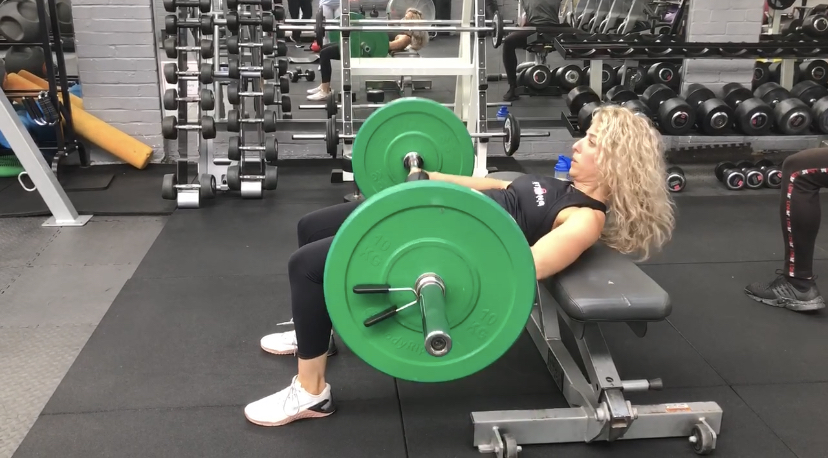Take your glute bridge to the next level with hip thrusts, the ultimate glute building workout.
Finding the perfect glute exercise is tricky. You’ve got squats, but as they are a compound exercise they target the entire leg, rather than just the glute muscles. Deadlifts are also a useful exercise to target the glutes, but you’ll also be using the lower back and hamstrings to get the bar off the floor. While glute bridges are a great isolation exercise, they aren’t as effective as a heavy lift that strengthens your muscles.
However, you can call off the search. According to personal trainer Yani Fish, the best exercise for building strong, powerful glutes is the hip thrust. “Hip thrusts are a glute dominant exercise,” she explains. This means that your glutes are the main muscle your body uses to lift the weight off the floor, “but you’ll find your adductors (inner thighs), quads, hamstrings and core will be engaged too.”
You may also like
A lower body workout for glutes numb from sitting all day
Why are hip thrusts so good?
Hip thrusts are a hip hinging exercise, similar to a glute bridge but with your back raised off the floor. This gives your body a larger range of motion, meaning that the glutes are under tension for a longer time which adds an extra challenge to the muscles.
Hip thrusts can be performed using bodyweight or with dumbbells or barbells added for extra resistance. “As they’re a safe lower body lift they’re great for most people, including beginners or those less confident in heavy lifting,” says Yani. “It’s super stable as your feet are placed firmly on the ground and your back is resting on a surface. This means your lower back is more protected than it is with other lower body lifts.”

The fact that the lift is so sturdy means that you can add more weight than you might think, resulting in more “activation and working the glutes more efficiently. That helps increase muscle tension, which leads to muscle growth and an increase in strength,” says Yani.
“However, just because it’s good for lots of people, it doesn’t mean it’s easy, ineffective or boring. By increasing resistance and reps incrementally you’ll see your strength grow week on week. You can also add instability for a further challenge, such as performing single leg or b-stance hip thrusts when you feel comfortable,” she adds.
What weight should you use for hip thrusts?
“To start off I’d focus on bodyweight hip thrusts, just to make sure your form is correct and you’re comfortable,” says Yani. Focus on your posterior pelvic tilt during this move by keeping your ribs down and pushing your pubic bone towards the sky. This ensures you don’t have too much of an arch through your lower back.
“Then you can add a long resistance band, looping it around your feet and pulling it over your hips or place a light dumbbell on your hips and increase weights until you’re comfortable to use an Olympic bar and plates (plus a pad to protect your hips),” says Yani.
She recommends starting with around four sets of six reps and increasing your reps over time with the same weight until you can comfortably perform 12 reps, then increase the weight.
How to do a hip thrust
- Sit in front of a bench, sturdy chair, sofa or box with your legs extended out in front of you and your back leaning against the surface, around your bra strap.
- Bend your knees so your feet are flat on the ground, shoulder-width apart.
- Pressing through your heels and squeezing your glutes, lift your hips off of the floor and push them towards the sky.
- Keep your head looking forward and don’t flare your ribs – keep your stomach drawn in, ribs down and pelvis tilted back.
- When you reach the top of the move, pause for a second. Then lower your hips back to the ground, keeping your core engaged.
Repeat up to 12 times
Follow @StrongWomenUK on Instagram for the latest workouts, delicious recipes and motivation from your favourite fitness experts.
Source: Read Full Article
